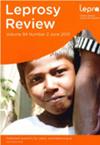What factors influence adherence and non-adherence to multi-drug therapy for the treatment of leprosy within the World Health Organisation South East Asia region? A systematic review
IF 0.8
4区 医学
Q4 DERMATOLOGY
引用次数: 0
Abstract
SummaryIntroduction Leprosy is an infection caused by Mycobacterium leprae . Despite curative treatment being available, leprosy is still prevalent worldwide, with little change in annual cases observed in the past decade. The WHO South East Asia region is the worst affected, accounting for over 70% of new cases. One reason leprosy transmission still occurs is non-adherence to multi-drug therapy. This project aims to determine the factors that influence adherence. Methods A systematic review was performed using 6 databases. This returned 402 unique results. Screening of the title and abstract resulted in 362 of these being excluded. From the remaining 40, full-text analysis identified 17 studies that met the inclusion criteria and formed the review. Both qualitative and quantitative methods of collecting and analyzing data were used to form a non-quantitative synthesis of the findings. Results Four factors influenced adherence: medication-related, healthcare-related, patient-related and society-related. From these, lack of knowledge about leprosy and multi-drug therapy was a predominant barrier to adherence, which related to all of these factors. Stigma and being female were also seen as important barriers to adherence - these manifested in numerous ways. Conclusion The review identified diverse barriers to adherence to MDT and no simple intervention will overcome these. Rather, wider issues such as continuous access to healthcare (particularly for women), stigma reduction and patient education need to be addressed. Improving these will increase patient confidence in, and access to, MDT, which will ultimately result in improved adherence to therapy.在世界卫生组织东南亚地区,哪些因素影响对麻风病多种药物治疗的坚持和不坚持?系统综述
摘要麻风是由麻风分枝杆菌引起的一种感染。尽管有治疗方法,麻风病仍然在世界各地流行,在过去十年中观察到的年度病例变化不大。世界卫生组织东南亚地区受影响最严重,占新增病例的70%以上。麻风病传播仍然发生的一个原因是不坚持多种药物治疗。该项目旨在确定影响依从性的因素。方法使用6个数据库进行系统回顾。这返回了402个唯一的结果。对标题和摘要进行筛选后,其中362篇被排除在外。在剩下的40项研究中,全文分析确定了17项符合纳入标准的研究,并形成了综述。收集和分析数据的定性和定量方法都被用来形成研究结果的非定量综合。结果影响依从性的因素有四个:药物相关、医疗保健相关、患者相关和社会相关。因此,缺乏对麻风病和多种药物治疗的了解是坚持治疗的主要障碍,这与所有这些因素有关。耻辱和身为女性也被视为坚持的重要障碍,这些障碍表现在许多方面。结论该综述确定了坚持MDT的各种障碍,没有简单的干预措施能够克服这些障碍。相反,需要解决更广泛的问题,如持续获得医疗保健(尤其是妇女)、减少耻辱感和患者教育。改善这些将提高患者对MDT的信心和获得MDT的机会,最终将提高对治疗的依从性。
本文章由计算机程序翻译,如有差异,请以英文原文为准。
求助全文
约1分钟内获得全文
求助全文
来源期刊

Leprosy review
医学-病理学
CiteScore
1.10
自引率
16.70%
发文量
35
审稿时长
>12 weeks
期刊介绍:
Leprosy Review is an Open Access peer reviewed journal including original papers on all aspects of leprosy. Topics published include research into the medical, physical and social aspects of leprosy and information relevant to leprosy control. We publish original research, short reports, case studies and reviews. The vision of the journal is to improve the management and control of leprosy and its consequences, by publishing relevant research and sharing experiences and best practices.
 求助内容:
求助内容: 应助结果提醒方式:
应助结果提醒方式:


